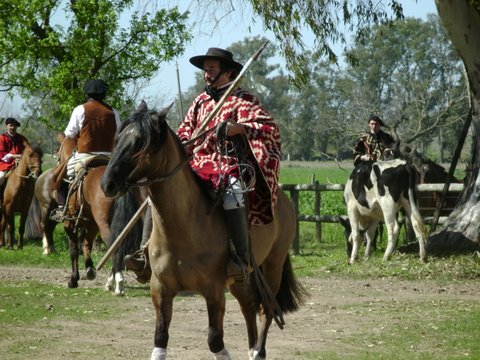Day-1: Buenos Aires - Tucuman
Day-2: Tafi del Valle - Qilmes
Day-3: Cafayate - Molinos
Day-4: Cachi - Salta
Day-5: Salta
Day-6: Humahuaca Canyon
Day-7: Salta - Buenos Aires
End of services
ARGENTINE EXPLORER ITINERARY
Day-1: Buenos Aires - Tucuman
Flight from Buenos Aires to Tucuman. Afternoon city tour. Founded in 1565, the city was moved to the present site in 1685. Popularly known as "El Jariin de la Republica" (The garden of the Republic), a visit includes the Obispo Colombres House, the historical House of the Declaration of Independence, the outstanding Cathedral, Casa Padilla Museum and the El Cadillal dam.

Day-2: Tafi del Valle - Qilmes
After breakfast, full day excursion to Tafi del Valle and Qilmes, situated in a deep depression and borders on Calchaqui mountains to the east (Mala Mala and Tafi Mountains at 3,500 m), on Munoz Hill (4440 m) to the west and to the south Nunorco Grande at 3,500 m. Visit to the old city of Quilmes. Today, its restored ruins and museum houses traces of a largely unknown ancient culture.
Day-3: Cafayate - Molinos
Full day excursion to Cafayate, a small town near to the Calchaquies Valley where some of the finest wines of Argentina are produced. Molinos is a traditional village in the Calchaqui Valley which preserves important archaeological ruins. A visit to its church, built in the XVIII century, and sanctuary to the remains of the last Spanish governor of the province of Salta.
Day-4: Cachi - Salta
After breakfast, excursion to the tiny village of Cachi at the foot of the ice peak of Mount Cachi 2280m. The Parish Church of Cachi has been declared a National Historic Monument. Famous for its furniture made of 'scardon's or giant cactus wood. Visit to the Recta del Tin Tin, an unforgettable landscape of giant cardon cacti.
Day-5: Salta
Half day city tour of Salta, the best preserved colonial city in Argentina, located in Lerma Valley, at 1280m meters. With many interesting buildings such as the Cathedral, dating back to the second half of the XIX century; the Cabildo, the San Francisco Temple and Convent, San Bernardo Convent and the Handicraft Market. Free afternoon to enjoy Salta at your own leisure.

Day-6: Humahuaca Canyon
Full day excursion to the UNESCO World Heritage site of Humahuaca Canyon. The tour will include a visit of the canyon, several villages, native markets, pre-Columbian mummies, and the remains of an ancient pre-Inca fortified town.
Day-7: Salta - Buenos Aires
After breakfast, transfer to the airport for the return flight to Buenos Aires and your return flight home.
activities including other treks, 4x4 trips and boat trips to other glaciers in the area such as Upsala, Onelli and Spegazzini.
End of services